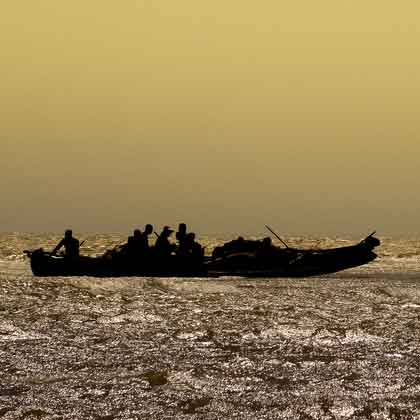At least 68 refugees and migrants died and 74 others remain missing after their boat capsized off the coast of Yemen on Sunday, August 3, according to the International Organization for Migration (IOM). The vessel was carrying 154 people, mostly Ethiopians, when it went down in waters off Yemen’s Abyan province.
Twelve people survived the shipwreck, while the bodies of 54 refugees and migrants washed ashore in the district of Khanfar. An additional 14 bodies were recovered at a different location and taken to a hospital morgue. Abdusattor Esoev, head of the UN’s International Organization for Migration in Yemen, confirmed the casualty figures to news agencies.
Abdul Qader Bajamil, director of the health office in Zanzibar, indicated that authorities were making arrangements to bury the victims near the city of Shaqra while search operations continued under difficult conditions. The boat capsized due to bad weather as it attempted to navigate the perilous waters between Yemen and the Horn of Africa.
The waterways between Yemen and the Horn of Africa represent one of the busiest and most dangerous migration routes in the world. Refugees and migrants travel in both directions along this corridor, with many fleeing conflict in Somalia and Ethiopia seeking refuge in Yemen or attempting to reach the more prosperous Gulf countries. The area experienced a surge in Yemenis fleeing their country after civil war erupted in 2014.
According to IOM data, more than 60,000 refugees and migrants arrived in Yemen in 2024, representing a significant decrease from the previous year’s total of 97,200. The reduced numbers coincide with increased patrols of the waters, according to an IOM report released in May. Despite the civil war that has devastated the country for nearly a decade, Yemen continues to serve as a major transit point for migrants from East Africa and the Horn of Africa.
The treacherous journey requires migrants to rely on smugglers who use often dangerous and overcrowded boats to cross the Red Sea or Gulf of Aden. These vessels frequently lack proper safety equipment and are operated under hazardous conditions. Survivors have reported that people-smugglers have become increasingly reckless, knowingly sending boats into dangerous weather conditions to avoid maritime patrols.
The recent tragedy adds to a mounting death toll along this migration corridor. IOM statistics show that 558 people died along the route in 2024, while over the past decade, at least 2,082 people have disappeared along the route, including 693 confirmed drownings. The organization’s Missing Migrants Project has documented more than 3,400 deaths and disappearances along the route in the past 10 years, with 1,400 of those fatalities attributed to drowning.
Yemen currently houses approximately 380,000 refugees and migrants despite ongoing conflict. The Houthi rebels and government forces reached a truce agreement in April 2022 that resulted in decreased violence and slight easing of the humanitarian crisis, though the country remains unstable. The Iran-backed Houthi group has controlled much of northwestern Yemen since 2014, when they ousted the internationally recognized government from the capital, Sanaa.
Earlier incidents this year have highlighted the persistent dangers facing migrants on this route. In March, two boats carrying more than 180 migrants sank off Yemen’s Dhubab district due to rough seas, with only two crew members rescued. In January, 20 Ethiopians died when their boat capsized off the Yemeni coast. Similar tragedies have occurred in nearby waters, including incidents off Djibouti where dozens have perished in recent months.
The IOM continues to advocate for enhanced legal migration pathways to prevent people from being exploited by smugglers. Esoev emphasized the importance of member states creating regular channels for migration, stating that this would allow people to “take legal ways in order to migrate, instead of being trapped or deceived by smugglers and taking those dangerous journeys.”
For many migrants, Saudi Arabia represents the final destination in their perilous journey. The Gulf kingdom’s economic opportunities continue to draw thousands despite the well-documented risks of the sea crossing. Search and rescue operations remain limited in the region, contributing to the high casualty rates when boats encounter difficulties in the vast coastal waters.

